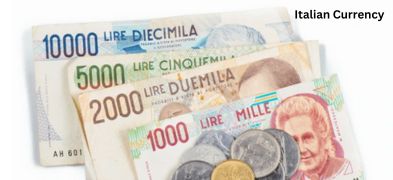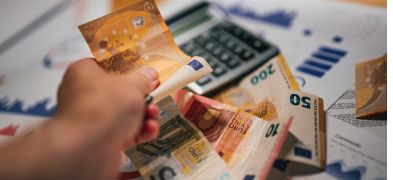Important Information
This website is managed by Ultima Markets’ international entities, and it’s important to emphasise that they are not subject to regulation by the FCA in the UK. Therefore, you must understand that you will not have the FCA’s protection when investing through this website – for example:
- You will not be guaranteed Negative Balance Protection
- You will not be protected by FCA’s leverage restrictions
- You will not have the right to settle disputes via the Financial Ombudsman Service (FOS)
- You will not be protected by Financial Services Compensation Scheme (FSCS)
- Any monies deposited will not be afforded the protection required under the FCA Client Assets Sourcebook. The level of protection for your funds will be determined by the regulations of the relevant local regulator.
Note: Ultima Markets is currently developing a dedicated website for UK clients and expects to onboard UK clients under FCA regulations in 2026.
If you would like to proceed and visit this website, you acknowledge and confirm the following:
- 1.The website is owned by Ultima Markets’ international entities and not by Ultima Markets UK Ltd, which is regulated by the FCA.
- 2.Ultima Markets Limited, or any of the Ultima Markets international entities, are neither based in the UK nor licensed by the FCA.
- 3.You are accessing the website at your own initiative and have not been solicited by Ultima Markets Limited in any way.
- 4.Investing through this website does not grant you the protections provided by the FCA.
- 5.Should you choose to invest through this website or with any of the international Ultima Markets entities, you will be subject to the rules and regulations of the relevant international regulatory authorities, not the FCA.
Ultima Markets wants to make it clear that we are duly licensed and authorised to offer the services and financial derivative products listed on our website. Individuals accessing this website and registering a trading account do so entirely of their own volition and without prior solicitation.
By confirming your decision to proceed with entering the website, you hereby affirm that this decision was solely initiated by you, and no solicitation has been made by any Ultima Markets entity.
I confirm my intention to proceed and enter this websiteWhat Was Italy’s Currency Before the Euro?
The currency replaced by the euro in Italy was the Italian lira. Used for over a century, the lira (₤ or ITL) was Italy’s official currency until 2002. On January 1, 2002, Italy, along with 11 other European Union countries, introduced the euro as its new official currency for everyday transactions.
Before the euro’s arrival, prices in Italy were displayed in both lire and euros for public familiarity. But after the transition, the lira was completely withdrawn from circulation. This was a monumental shift for both citizens and the Italian economy.

Official Exchange Rate to Euro
When the euro launched as a physical currency in 2002 (it was used digitally from 1999), the official exchange rate was locked at:
1 Euro = 1,936.27 Italian lire
This fixed conversion rate was designed to ensure a smooth transition without disrupting market equilibrium.
What Does Italy Use for Currency?
Italy now uses euro banknotes and coins, just like the rest of the eurozone. Here’s what that includes:
- Banknotes: €5, €10, €20, €50, €100, €200, €500
- Coins: 1, 2, 5, 10, 20, 50 cents and €1, €2
All Italian euro coins have a national design on one side and the common European design on the other.

Does Italy Have Its Own Currency?
No, Italy does not have its own independent currency anymore. Since joining the eurozone, it follows the European Central Bank’s monetary policy. Italy gave up monetary sovereignty in exchange for economic stability, lower interest rates, and better trade integration across Europe.
There are no active discussions to reintroduce the lira. The euro is firmly established in Italian financial systems.
Timeline: From Lira to Euro in Italy
How the Italian lira became the currency replaced by the euro in Italy
1861 – The Birth of the Italian Lira
Italy unified into a single nation, and the Italian lira (₤) became the national currency. The lira was pegged to the French franc, and it remained Italy’s currency for over a century.
1946 – Post-War Lira Devaluation
After WWII, Italy saw severe inflation, and the lira’s value dropped significantly. By the 1950s, the lira was stable again but remained relatively weak on the global stage.
1970s–1990s – Lira Volatility & Economic Turbulence
The Italian lira faced frequent devaluations, especially during oil crises and economic instability. By the early 1990s, Italy’s public debt was among the highest in Europe. The country struggled to maintain currency stability. This volatility led to conversations around adopting a common European currency.
1992 – Italy Joins the Maastricht Treaty
Italy signed the Maastricht Treaty, committing to join the future European Economic and Monetary Union (EMU). To qualify, Italy had to reduce inflation and improve fiscal discipline—no easy feat.
1999 – Euro Introduced as a Digital Currency
The euro was introduced digitally (for accounting and electronic payments) in Italy and other EU countries. But people still used lira notes and coins in everyday transactions.
January 1, 2002 – Euro Replaces the Lira Physically
On this historic day, Italy fully replaced the lira with the euro. Euro coins and notes entered circulation, and the Italian lira ceased to be legal tender after February 28, 2002. Official fixed exchange rate: 1 Euro = 1,936.27 Italian lire
2002–Present – Italy and the Euro
Today, Italy uses the euro (EUR) for all financial transactions. The transition brought price stability, stronger EU trade, and access to a shared monetary policy through the European Central Bank.
2025 Outlook – Euro’s Ongoing Role in Italy
In 2025, the euro remains strong in Italy despite global economic shifts. It’s one of the most traded currencies in the forex market, and Italy continues to benefit from being part of the eurozone.
Euro Performance in Italy (2025 Outlook)
As of 2025, the euro remains strong in Italy. While the currency faces occasional pressure from geopolitical and economic shifts, its integration continues to support trade, tourism, and investor confidence.
Key 2025 Trends:
- Inflation in Italy is projected to stabilize within the 2% ECB target.
- Euro strength against USD is expected to fluctuate between 1.06–1.10.
- Forex traders continue to watch EUR/USD and EUR/GBP closely for volatility opportunities.
Whether you’re trading the euro, analyzing currency transitions, or looking for macroeconomic insights, Ultima Markets is your go-to platform. Stay informed and empowered because understanding where currencies come from helps you see where they’re going next.
Disclaimer: This content is provided for informational purposes only and does not constitute, and should not be construed as, financial, investment, or other professional advice. No statement or opinion contained here in should be considered a recommendation by Ultima Markets or the author regarding any specific investment product, strategy, or transaction. Readers are advised not to rely solely on this material when making investment decisions and should seek independent advice where appropriate.












